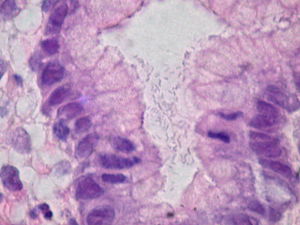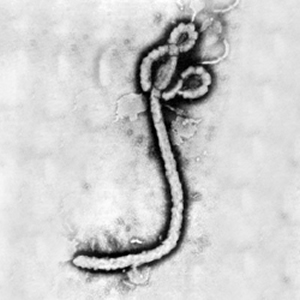Anti-Helicobacter Pylori Activity From Natural Products: Difference between revisions
Amie Patel15 (talk | contribs) No edit summary |
Amie Patel15 (talk | contribs) No edit summary |
||
| Line 8: | Line 8: | ||
<br> | |||
==Bactericidal Activity of Plant Extracts== | ==Bactericidal Activity of Plant Extracts== | ||
Many different extracts from plants have been shown to have antimicrobial activity. GutGard™ is a flavonoid rich extract of Glycyrrhiza glabra Linn, which is commonly known as Licorice. The company sells this product to those who suffer from gut and digestion related issues. Many studies have been conducted to determine the validity of GutGard™. Furthermore, different acetone and methanol extracts were taken from traditional medicinal plants to determine the minimal inhibitory concentration on different strands of ''H. pylori''. | |||
<br> | <br> | ||
Revision as of 23:35, 21 March 2014
For many individuals, Helicobacter pylori, gram-negative bacteria, reside in the stomach that many times lead to duodenal and peptic ulcers. Even though most individuals infected with H. pylori never show symptoms, this bacterium causes around 85 percent of all ulcers. Antibiotics, clarithromycin and amoxicillin, and a proton pump inhibitor are typically used to inhibit H. pylori growth to cure the ulcer. This triple therapy for the elimination of H. pylori faces uprising resistance problems demanding new antibiotic candidates. Alternative therapies from natural plants and foods are gaining popularity in order to find products to help combat the drug-resistant strands. Many studies have examined the antimicrobial activity of Pakistanian, Indian, and Iranian medicinal plants can be used as potential bactericidal agents for curing ulcers. Additionally, studies have found that fractional isolates of honey and turmeric are responsible for antibacterial activity. These compounds provide new lead molecules that can help eradicate H. pylori.
Resistant Strands of H. pylori
Bactericidal Activity of Plant Extracts
Many different extracts from plants have been shown to have antimicrobial activity. GutGard™ is a flavonoid rich extract of Glycyrrhiza glabra Linn, which is commonly known as Licorice. The company sells this product to those who suffer from gut and digestion related issues. Many studies have been conducted to determine the validity of GutGard™. Furthermore, different acetone and methanol extracts were taken from traditional medicinal plants to determine the minimal inhibitory concentration on different strands of H. pylori.
Flavonoid Extract
At right is a sample image insertion. It works for any image uploaded anywhere to MicrobeWiki. The insertion code consists of:
Double brackets: [[
Filename: Ebola virus 1.jpeg
Thumbnail status: |thumb|
Pixel size: |300px|
Placement on page: |right|
Legend/credit: Electron micrograph of the Ebola Zaire virus. This was the first photo ever taken of the virus, on 10/13/1976. By Dr. F.A. Murphy, now at U.C. Davis, then at the CDC.
Closed double brackets: ]]
Other examples:
Bold
Italic
Subscript: H2O
Superscript: Fe3+
Overall paper length should be 3,000 words, with at least 3 figures with data.
Acetone and Methanol Extracts
Bactericidal Activity of Natural Foods
Include some current research in each topic, with at least one figure showing data.
Further Reading
[Sample link] Ebola Hemorrhagic Fever—Centers for Disease Control and Prevention, Special Pathogens Branch
References
Edited by (your name here), a student of Nora Sullivan in BIOL168L (Microbiology) in The Keck Science Department of the Claremont Colleges Spring 2014.


